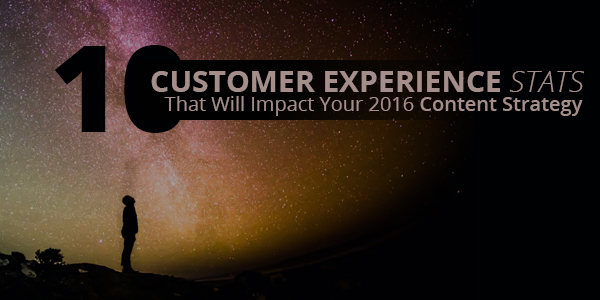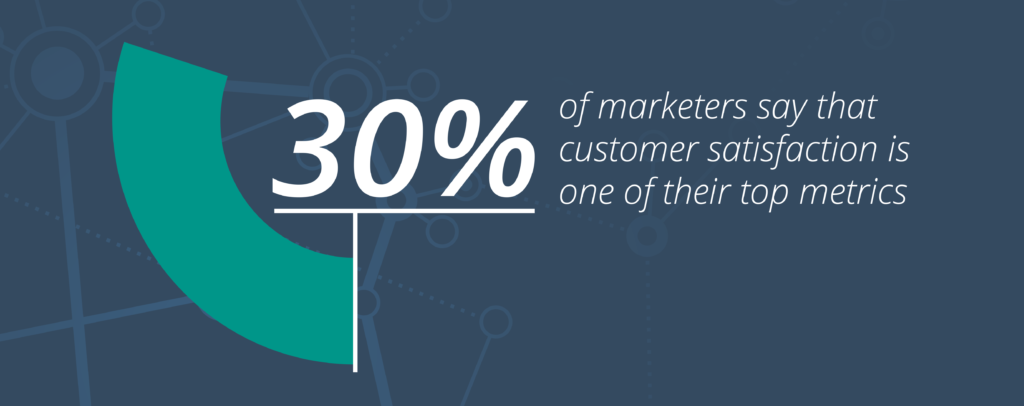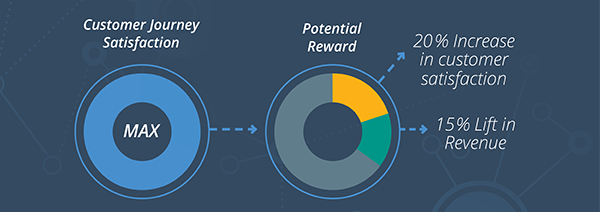With 2015 officially out the door, it’s time to redo, reshape, and refine that stale old content strategy in order to make it 2016-ready. Now more than ever, crafting a stellar customer experience needs to be a key element of marketing, social media strategy, and customer-building efforts for B2B organizations.
To make sure every team that plays a part in the buyer’s journey is focused on what matters most to customers, let’s start by looking at the stats.
These insights can help guide content development, influence content strategy, and shed light on new ways to interact with customers to build a more positive overall experience.
For a refresher on the core elements that go into well-rounded, effective content strategy, check out 10 Stats That Will Impact Your 2015 Content Strategy.
Now let’s dive in!
1. “38% of marketers plan to shift spend from traditional mass advertising to advertising on digital channels, including social media advertising, outreach and engagement, as well as mobile apps and tracking.”
38% of marketers plan to shift spend from traditional mass advertising to advertising on digital channels
This overall shift in marketing dollars is about more than money. Brands see the power of being accessible to their customers, and social media and digital channels allow brands to craft content that’s unique to specific buyer personas and shared in real-time. This shift toward a more digital-infused content strategy also enables B2B organizations to feature timely topics, address challenges or questions quickly, and create a more active rapport with potential customers in real time by crafting a presence on a few select online “channels” where potential customers spend time.
(Source)
2. “Satisfaction on customer journeys is 30% more predictive of overall customer satisfaction than measuring happiness for each individual interaction.”
Yes, customers expect good customer service from a brand on a case-by-case basis, but they also want to see the same level of service at each point in the buyer’s journey.
When an organization can strive to create a buyer experience that’s consistent on a technical, emotional, and personal level, it goes a long way in building a level of trust and rapport. It also demonstrates the company’s ability to follow through on what they promise to deliver.
(Source)
3. 51% of B2B companies avoid vendors after a bad customer service experience with them.
51% of B2B companies avoid vendors after a bad customer service experience with them.
Enough said. In the online age, it’s easier than ever to do a little research, find a compatible service provider, and connect with them instantly. A customer connection in hand is a very powerful asset to foster in the now, because it’s not a guarantee that they will stick around. Find simple ways to address concerns and focus on customer feedback to improve interaction at every step in the buyer’s journey.
(Source)
4. “Maximizing satisfaction with customer journeys has the potential not only to increase customer satisfaction by 20% but also to lift revenue by up to 15% while lowering the cost of serving customers by as much as 20%.”
Now, that is some powerful stuff! Zero in on the top three to five journeys that a customer is likely to take when interacting with the organization, and refine them. Putting in the extra effort to make it easier for front-end customer service representatives to address problems quickly and easily without having to pass a request on again and again is another win-win way to educate and empower employees while improving the customer experience.
(Source)
5. “30% of marketers say that customer satisfaction is one of their top metrics.”
30% of marketers say that customer satisfaction is one of their top metrics
To get more traction with customers, establish a way to track: a) the most common customer service topics, b) insights on response rates, and c) overall interaction quality. The more refined information that your organization can gather directly from target clients, the more effective your teams will be at creating content strategies with a one-team mentality to promote a more cohesive purchase experience.
(Source)
6. 70% of B2B marketers consider mobile as a “crucial enabler” and conduit of their overall sales.
Research, comparative shopping, and first-touch by a customer are all possible through mobile technology. Due to the fact that B2B buyers conduct an average of 12 searches before ever visiting a specific brand’s site, it’s no wonder that mobile efforts are an essential component to integrate into a content strategy in 2016.
(Source)
7. In 2015, 60% of marketers said that email was a critical enabler of products and services and an integral touch point along the customer journey, with 73% saying email marketing is core to their business.
Email is still a big contender, especially with the advancement of mobile as a larger component of B2B marketing content strategy. Subscribers are always tuned in to their inboxes, and email allows them to stay up to date with vendor news any time of day.
(Source)
8. 74% of consumers have spent more money due to good customer service.
74% of consumers have spent more money due to good customer service
When customers are happy, they trust the brand, are willing to spread the good word, and will make a repeat purchase. Why not leverage this good fortune and ask clients to share their experience in a white paper, on social media, or through an online video that the organization can then integrate into as part of an online content strategy?
9. In a few years, 89% of businesses will compete mainly on customer experience.
Customer experience will become they key brand differentiator for B2B organizations
A positive experience goes a long way in customer retention, which is why it’s a good idea to see how your organization can do it better than the competition. A head start on building a buyer’s journey that’s customer-friendly will ensure a leg up on competitors in the years to come.
(Source)
10. By 2020, customer experience will overtake price and product as the key brand differentiator.
Behind every transaction is a person or team of people who want to be appreciated, heard, and supported. Build a content strategy that focuses on ways that your B2B organization can or is already doing this in 2016, and begin to create long-term connections that earn trust—the glue that keeps customers coming back again and again.





